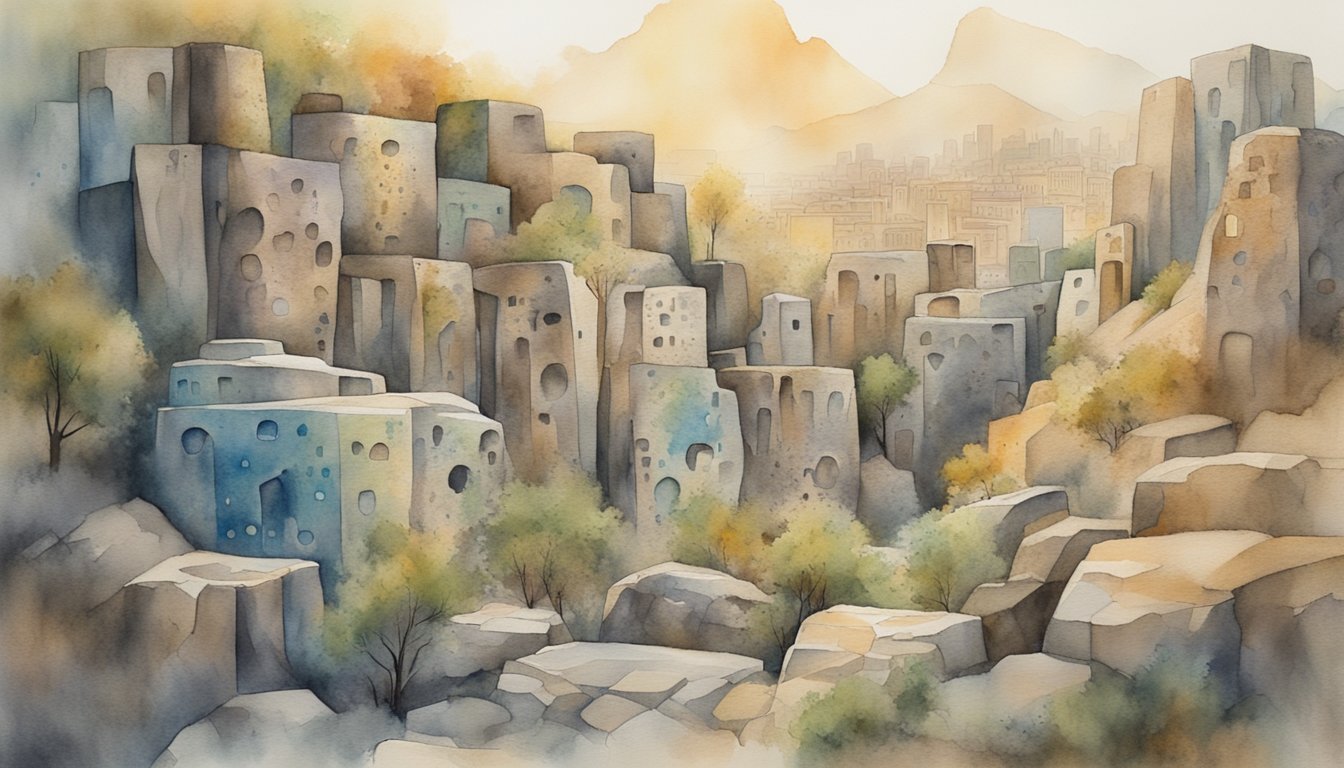Understanding Petroglyphs
Petroglyphs are a form of rock art, created by carving into rock surfaces, and are distinct from pictographs which are rock paintings. These carvings are of great interest to archaeologists and offer insights into historical symbolic communication.
Origins and History
Petroglyphs can be traced back to prehistoric times, with some dating back to the Neolithic period. They have served as a means of symbolic communication for ancient peoples, often depicting animals like camels, significant events, or territorial boundaries. For instance, archaeologists have found that in Scandinavia, runes carved into rocks during the Nordic Bronze Age provided not just linguistic messages but also had ritualistic significance.
Global Distribution
The existence of petroglyph sites is a global phenomenon. In North America, petroglyphs have been discovered in various locations such as California and Michigan, attributed to Native Americans and, later, Spanish settlers. Across Africa, countries like Algeria, Cameroon, and Egypt, particularly in places like Tassili n’Ajjer and Wadi Hammamat, boast a rich array of rock carvings from different eras, including those of Egyptian dynasties. In Australia, locations such as Murujuga and Sydney showcase rock engravings by the Aboriginal peoples. These petroglyphs, despite the separation by vast distances, often share common elements such as the use of ideograms and the presence of a patina or desert varnish that form over the carvings over time.
Preservation and Threats

Petroglyphs, ranging from simple carvings to complex imagery, offer a window into the history and culture of early peoples, including Native Americans. They face numerous challenges today, from natural erosion to human actions, which necessitate urgent conservation efforts.
Modern Challenges
Petroglyphs created by prehistoric peoples across the Southwestern United States, such as those in Petroglyph National Monument near Albuquerque, face a host of modern challenges. The volcanic rocks and limestone surfaces that host over 100 petroglyphs at sites like Winnemucca Lake in Nevada, or Judaculla Rock in North Carolina, are vulnerable to both environmental and anthropogenic threats. Weathering and natural erosion gradually wear away the ancient carvings, but the impact of Western culture and the disrespect shown by acts of vandalism and graffiti have an immediate and damaging effect. Contemporary developments encroach upon archaeological sites, further endangered by the very progress of the society they predate. At the same time, regions like the Rio Grande Valley in New Mexico, home to numerous volcanic cones, and places like Sanilac Petroglyphs Historic State Park in Wisconsin are marked by the historic presence of these important artworks.
Conservation Efforts
Restoration and preservation activities are critical in safeguarding these irreplaceable cultural treasures. An important aspect of conservation is education, where local communities and visitors are informed about the importance of these sites. Organizations, including the U.S. National Park Service, enact protective measures, such as fencing, to guard against direct harm to petroglyph sites like those at the Petroglyph National Monument along the Rio Grande. In locations like the U.S. Virgin Islands and the West Mesa area, conservation efforts also involve studying petroglyphs to understand the best ways to preserve them against both natural decay and modern disruptions. Efforts are furthered by providing platforms for contemporary Native Americans to be actively involved in the preservation of their heritage, connecting the past with the present and future.

